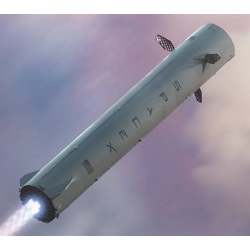
In August, a supercomputer known as the Spaceborne Computer was launched into space in a joint project between Hewlett Packard Enterprise and the U.S. National Aeronautics and Space Administration (NASA) to determine whether an off-the-shelf computer would last in the harsh conditions of space.
The system, which was launched on the SpaceX CRS-12 rocket, was installed in the International Space Station, powered up, and software downloaded. Tests of its ability to run in space have been successfully completed: the multi-node High Performance LINPACK (HPL) benchmark and high performance conjugate gradient (HPCG) benchmark, which are used to rank supercomputers globally from fastest to slowest, wrote Mark Fernandez, Americas HPC technology officer at HPE and co-principal investigator of the experiment, in a recent blog post.
"HPE's Spaceborne Computer is the first high-performance, commercial off-the-shelf (COTS) computer system to run one teraflop at the [ISS],'' Fernandez said in an interview. A teraflop is over one trillion calculations per second, which is up to 30 times faster than the performance of a standard laptop.
HPE and NASA have a relationship dating back to the 1960s, according to HPE. The computer company decided to expand its relationship with NASA to pioneer high-performance computing in space and take one step closer to a mission to Mars, Fernandez said.
For NASA, the objectives of the year-long experiment are to run compute and data-intensive applications on the HPE system in a changing radiation climate; monitor its power consumption and dynamically tune the power consumed; and determine the effects of solar radiation on the systems while they are running, according to the space agency's web page describing the mission. A year is roughly the amount of time it will take to travel to Mars.
"Today, the Spaceborne Computer contains compute nodes of the same class as NASA's premier supercomputer, Pleiades," said Fernandez. "We see the Spaceborne Computer experiment as a fitting extension to our HPE Apollo portfolio, purpose-built for supercomputing."
The Spaceborne Computer includes two COTS HPE Apollo 40 class systems with a high-speed HPC interconnect running an open source Linux operating system, Fernandez said. "Though there are no hardware modifications to these components, we created a unique, water-cooled enclosure for the hardware and developed purpose-built system software to address the environmental constraints and reliability requirements of supercomputing in space."
The Dragon spacecraft transporting the Spaceborne Computer was lifted into orbit from Kennedy Space Center in Florida on Aug. 14. The spacecraft took about two days to meet up with the International Space Station, where it remains berthed.
The decision to use off-the-shelf hardware was made because generally, in order for NASA to approve computers for space, the equipment needs to be "ruggedized," or hardened to withstand the conditions in space, he explained.
"Think radiation, solar flares, subatomic particles, micrometeoroids, unstable electrical power, irregular cooling,'' he noted. It takes time and money to achieve this physical hardening and it adds weight, so HPE took a different approach to "harden" the COTS hardware with software, Fernandez said.
"One of the goals of the experiment is to find a set of software parameters that allows the COTS supercomputer to continue to function and produce accurate results in the harsh environment of space,'' he said. Fernandez emphasized that nothing has been modified with any of the hardware or the open source software, but several layers of "detection, correction, and protection" were created.
This is the first time that a commercial off-the-shelf supercomputer has been sent into space. Most computers in space go through a process of "ruggedizing," Fernandez said, which delays the pace at which technology can be sent up. "However, because this is an off-the-shelf system, we are able to send more advanced and more recent technology to the [ISS] than if we had gone through the ruggedizing process."
If the experiment proves successful, it will result in the ISS being better able to communicate and transmit data.
Today, astronauts rely on computing power on Earth to run critical calculations. However, most astronauts are in low-earth orbit, such as at the ISS, where it only takes a few minutes to transmit data, Fernandez said. As they get further out, the lag time in communication increases. For example, "communications between Earth and the red planet take approximately 26 light minutes round-trip — and waiting nearly half an hour to get critical answers during a system failure isn't an option,'' he noted.
Adding that HPE officials are not sure what's ahead regarding future projects with NASA, Fernandez said "the Spaceborne Computer will be testing the impact of space on the technology to determine whether it would be possible to send a supercomputer alongside the astronauts, to reduce the time it take for critical calculations."
Esther Shein is a freelance technology and business writer based in the Boston area.



Join the Discussion (0)
Become a Member or Sign In to Post a Comment